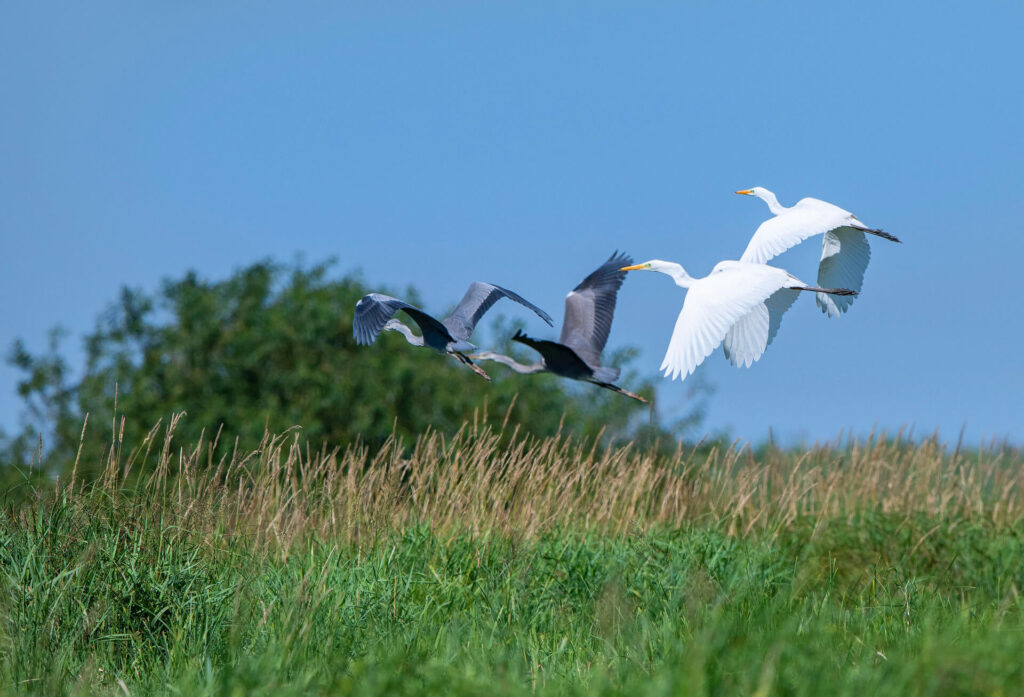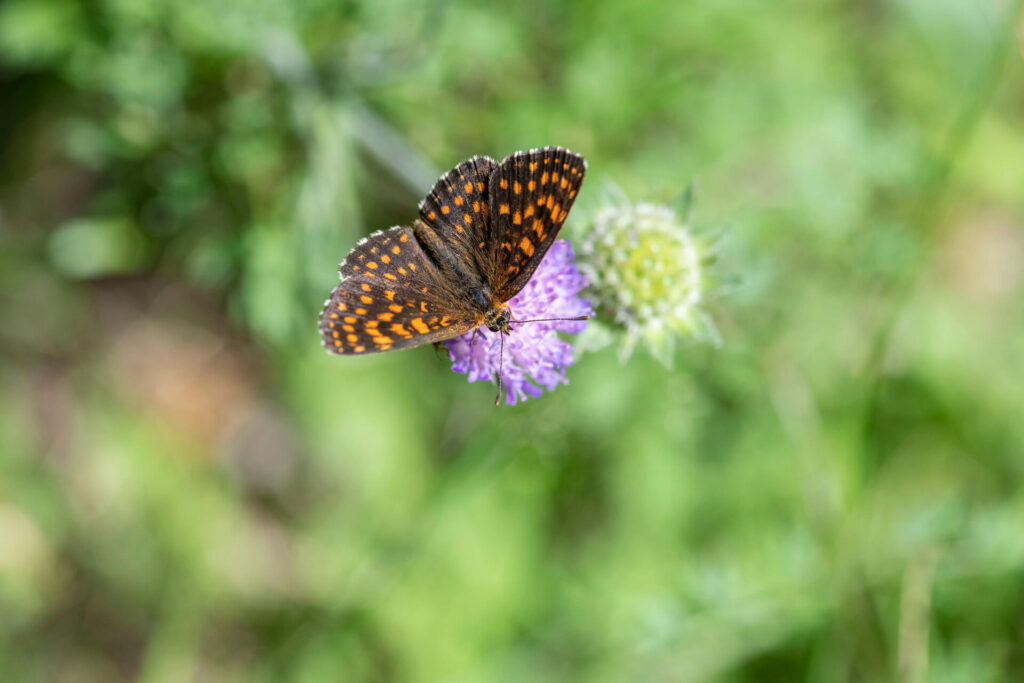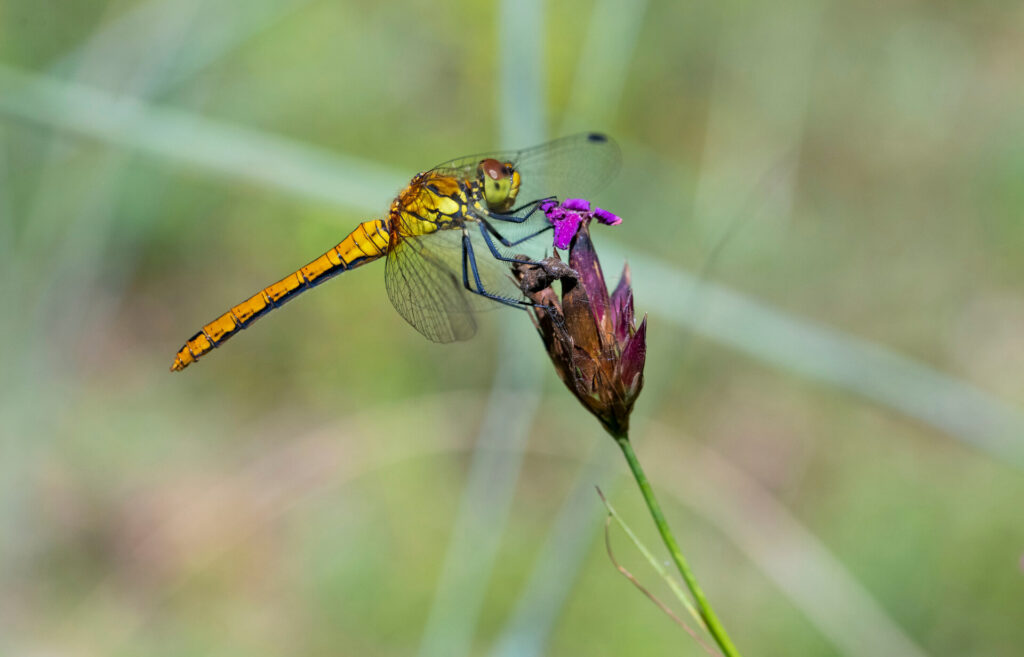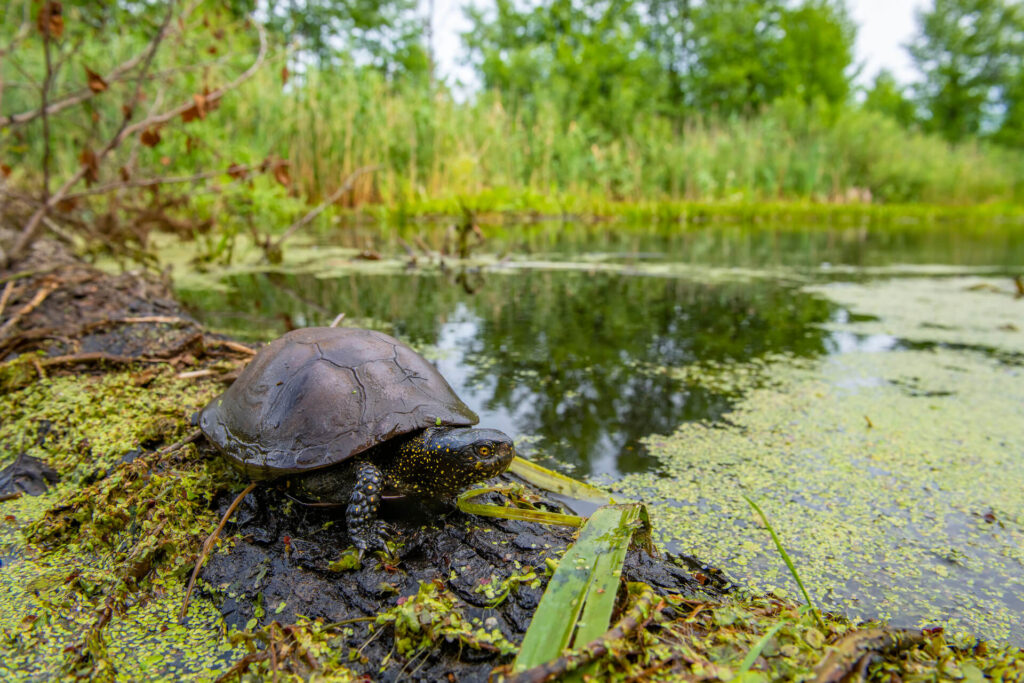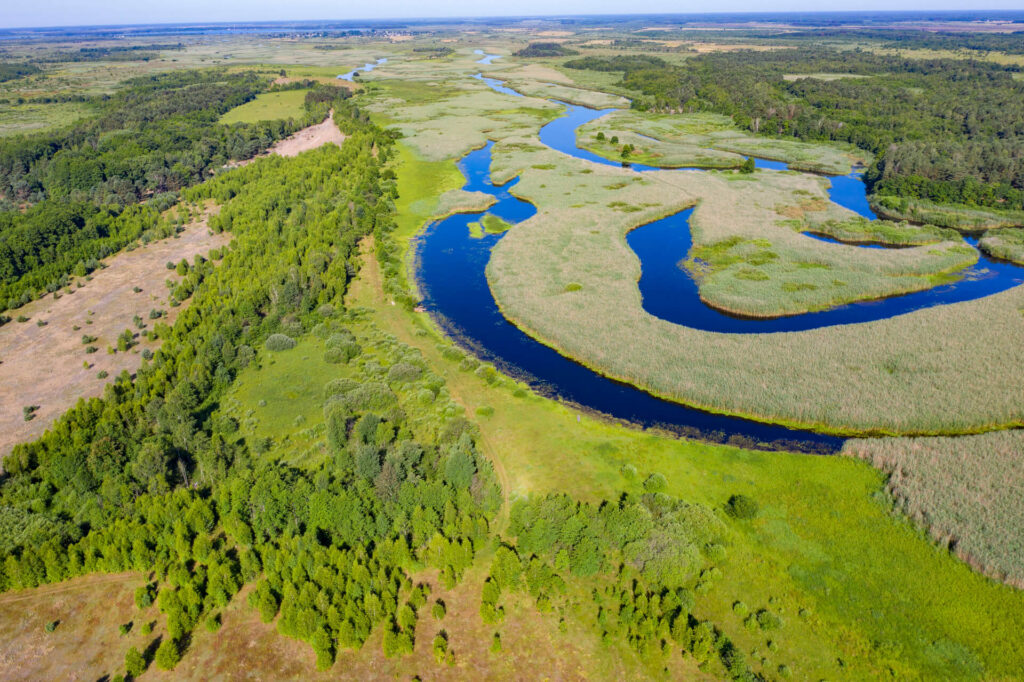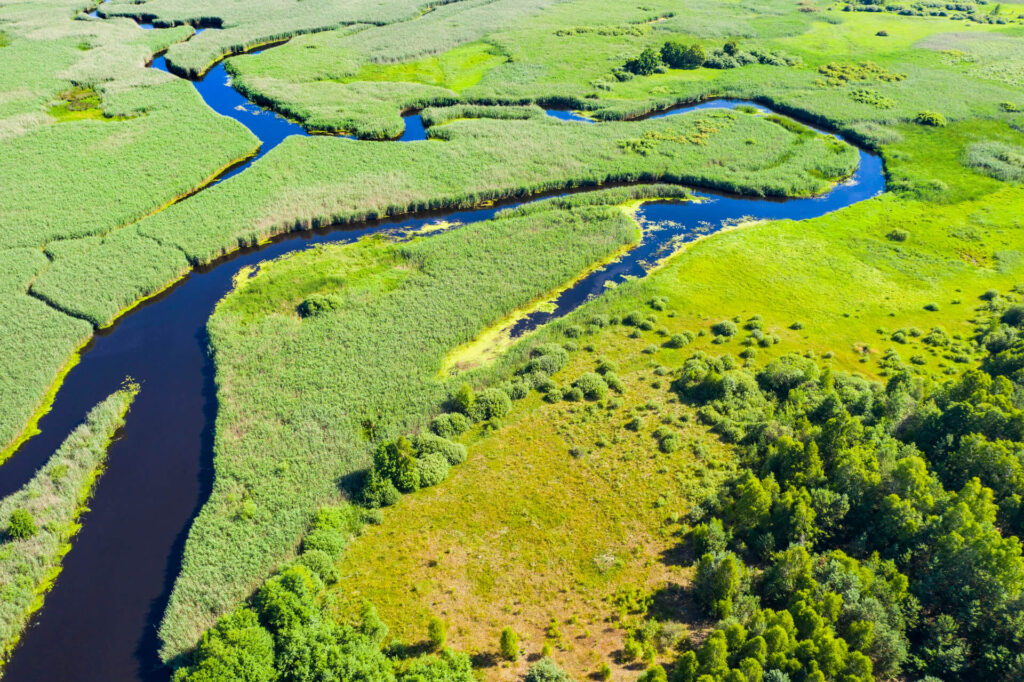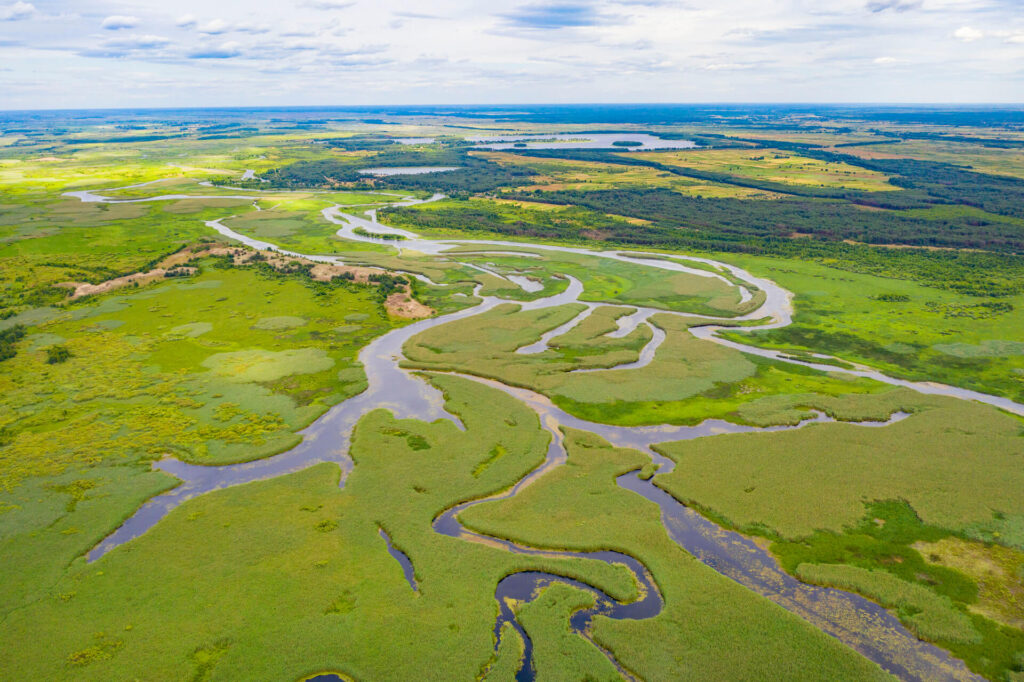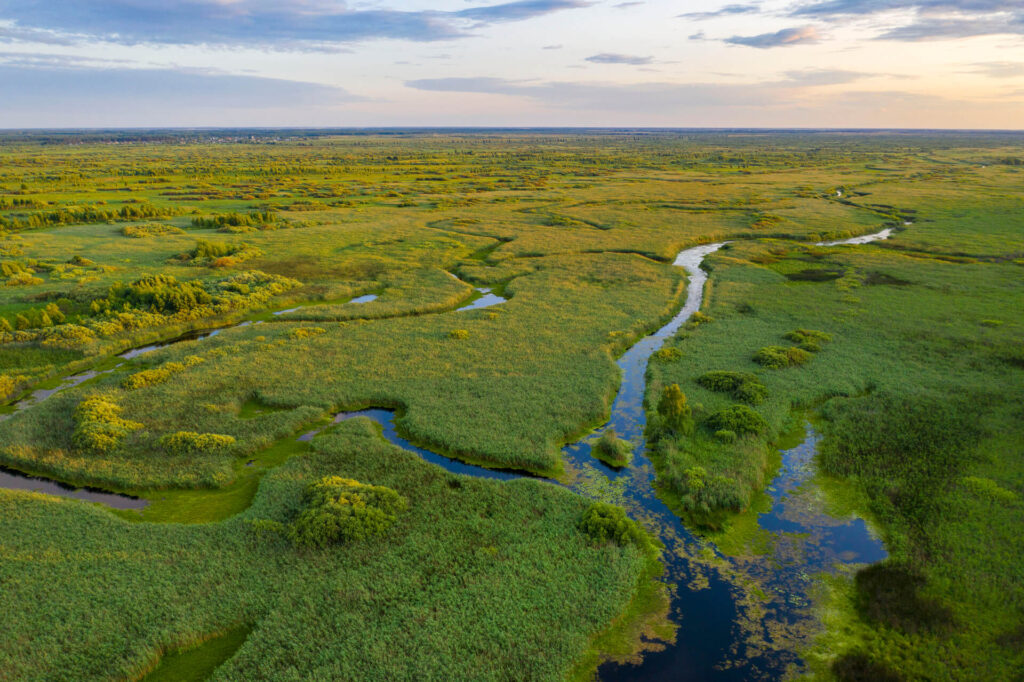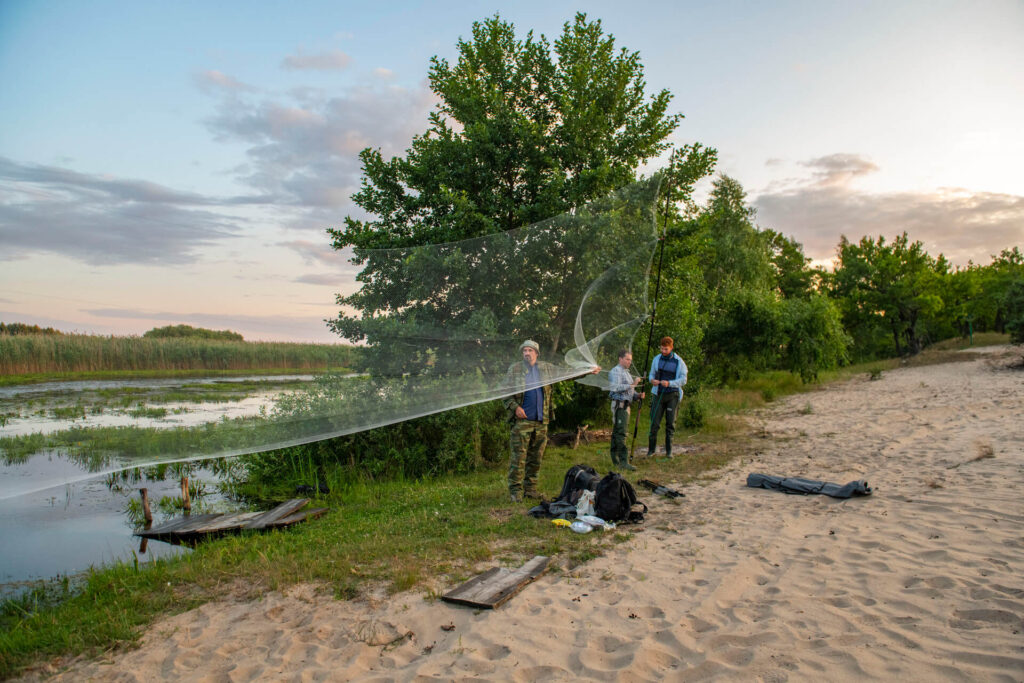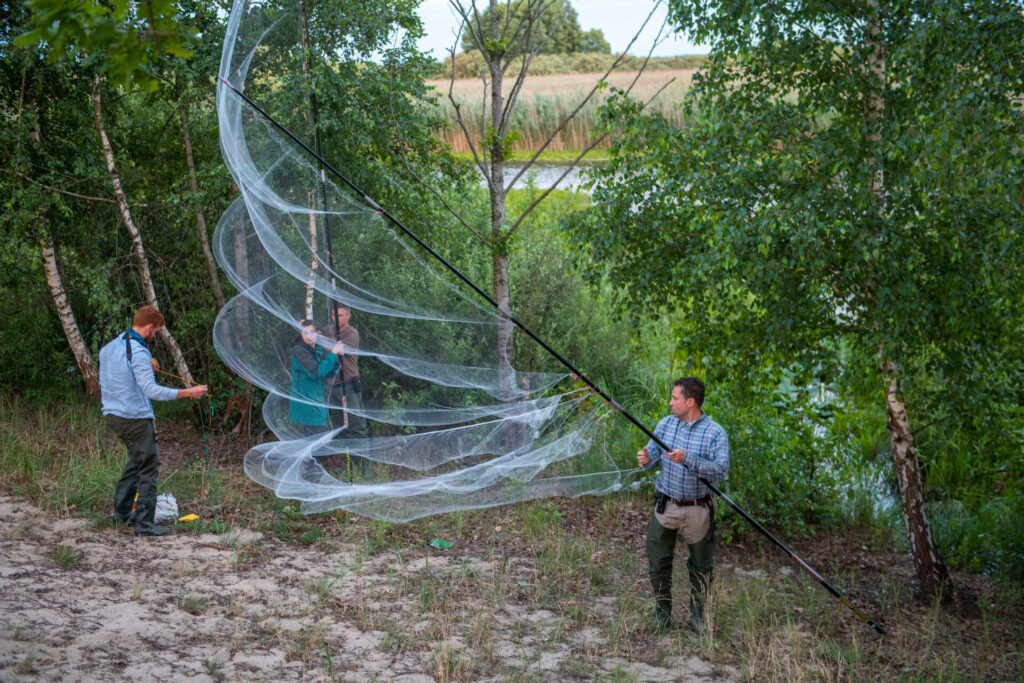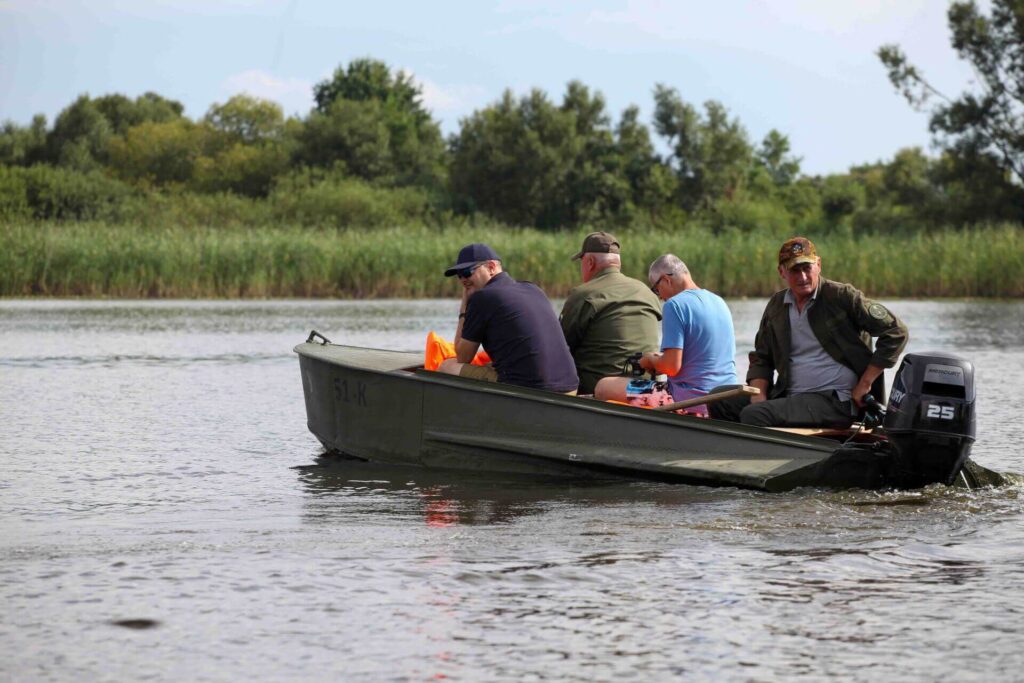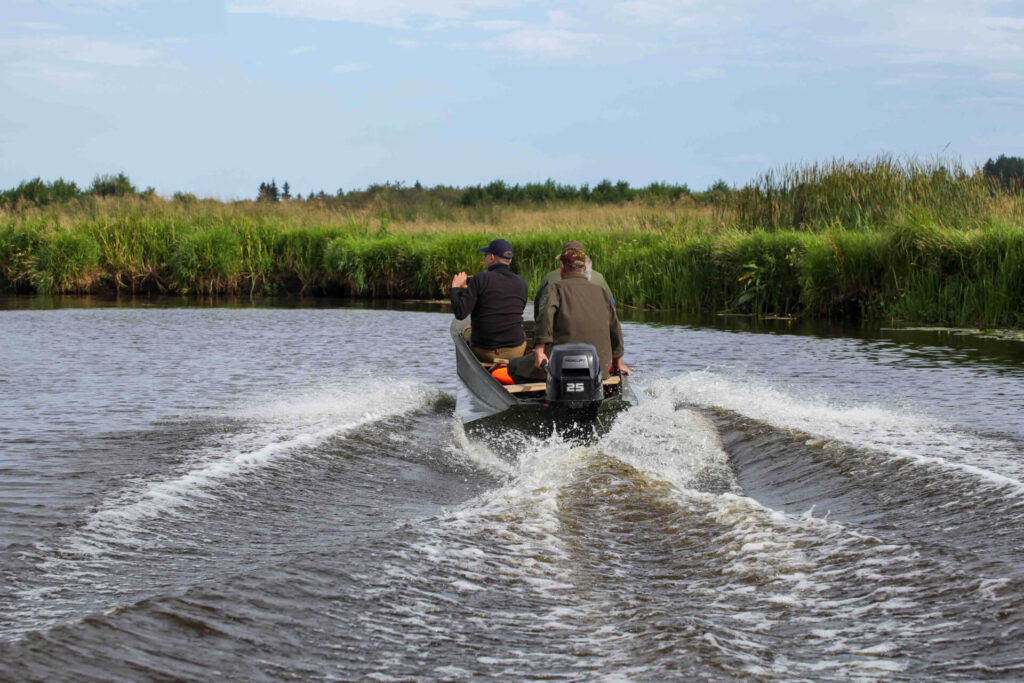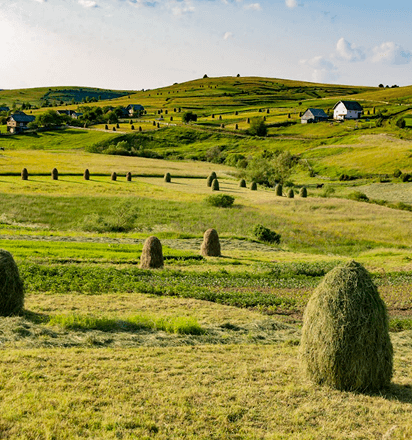Prypiat-Stokhid
Located in Ukraine’s Volyn region, the Prypiat-Stokhid National Nature Park covers an area of 39,315.5 hectares. The national nature park aims to preserve exceptional ecosystem environments in Polissia, in particular natural complexes formed by the floodplains of the Prypiat and Stokhid rivers.
The park’s territory is crisscrossed with an extensive network of waterways, lakes, swamps and meadows. The Stokhid River, named after its many branches and channels, creates an impression of having a ‘hundred passages’. This creates a dynamic landscape that is ideal for boat trips and water sports such as kayaking.
The park’s flora includes more than 550 species of vascular plants, including rare and endangered species listed in the Red Book of Ukraine, such as the marsh helleborine and the round-leaved sundew. The marshes and water meadows host a wide variety of orchids.
The park also supports a rich fauna, which includes. more than 200 bird species, including the black stork, white-tailed eagle, grey crane and osprey. The park’s rivers and lakes teem with fish, including pike, crucian carp and lamprey. Mammals such as elk, wild boar, badger and hare roam the surrounding forests and marshes.
Pripyat-Stokhid Park is a popular destination for ecotourism, where outdoor enthusiasts can enjoy water, cycling and hiking trails, as well as camping and birdwatching. The Polissia Regatta, an international extreme water tourism competition is held annually in summer. The waters, abundant with fish, also provide rich catches for anglers.
As well as boasting incredible nature, the park also has a rich culture, with well-preserved Polissian villages and architecture providing opportunities to become acquainted with the culture and traditions of the Polissian people.
Since russia’s invasion of Ukraine in early 2022, the Frankfurt Zoological Society (FZS) has been supporting the Prypiat-Stokhid National Nature Park with partial coverage of operational costs. The FZS also systematically supports biomonitoring, in particular by providing camera traps and equipment for monitoring birdlife.
